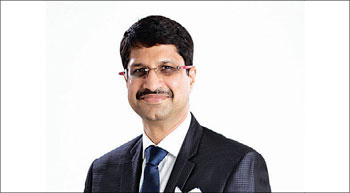A Smart City is a social settlement that is near-perfect on all parameters and self-sustaining, says Pradeep Misra, CMD, Rudrabhishek Enterprises Pvt Ltd.
Smart City’ is a popular term that has been linked to most, rather, all the upcoming urban big-ticket projects – be it private or public. Simply put, a Smart City is a social settlement that is near-perfect and is self sustaining.
The visionary provisioning of the concept of Smart Cities can be explained in the following way v it has enough of all amenities for every denizen, it ensures optimum utilisation of resources, and ensures a safe and secure existence for all. Of late, various programmes of the government like ‘Make in India’, ‘Digital India’, ‘Skill India’ and similar initiatives aim at providing a better standard of living to the people. These initiatives have helped companies build intellectual property and design cutting-edge technologies, thus helping these urban centres take the basic steps towards becoming a Smart City.
Experts believe that the vision of these cities should be towards preparing a safe and disaster resilient India by developing a holistic, proactive, multi-disaster oriented and technology-driven strategy through a culture of prevention, mitigation, preparedness and response.
There are several verticals in which a city’s infrastructure can be addressed for better analysis of a Smart City’s development.
HOUSING: The style of housing decides a lot of factors in a city. In a city with well-planned housing, everything falls into place. There is adequate and correct space to put in the other requisite amenities. Several post-construction analysis reports show that in India, 95 per cent of the planning and construction processes do not have town planners. It is the engineers who do the town planners’ job. As a result, when the final blueprint of a city is nearing completion, the amenities to be put in the end have to be compromised.
TRANSPORTATION: The lifeline of any part in the world is transportation. It includes roads, vehicular traffic, traffic signals and all the small amenities like parking spaces, underpasses, bridges, foot-bridges and similar provisions. All these again need a plan, prepared and executed under the supervision of a transport planner and not just engineers.
ADMINISTRATION: A strict and disciplined vigil needs to be maintained on all the happenings in and around the city. There needs to be a methodology to make following rules a custom, to make these cities survive. There needs to be a very strong set-up for law and order, as that will ensure the safety and security of the cities.
RESOURCES: Both availability and sustainability of resources are very important. Plans of most cities talk of using renewable sources of energy like wind, solar, hydro, etc. This clean energy plan is a part of the sustainability factor of a city as a whole. These are some broad categories that help understand the origination plan of the cities. Smart security systems and basic infrastructure are viable enough to provide the foundations for the grand plans of smart living in Smart Cities.
Survive or perish
Now comes the second part – the question of survival. This can again be analysed under two parts.
First is the test of natural calamities, and second, the test of migrating population. India is a land of varied topography. There are floods, earthquakes, landslides, storms and cloudbursts occurring across various parts of its vast land mass. Environmental, social and economic sustainability, digital inclusion and high quality of life are considered important elements in the design of Smart Cities. An Emergency Response System and resilience are among the most crucial dimensions of smart and future cities.
The planners need to focus on developing emergency response systems for disasters of various scales with a focus on transportation systems like Intelligent Transportation Systems including Vehicular Ad hoc Networks (VANETs) and mobile & cloud computing technologies which provide better evacuation results in Smart Cities. A city can be considered ‘smart’ only when it is capable of defending itself against natural and man-made catastrophes.
Improved surveillance, better weather forecast and monitoring networks, sensors and monitors are some steps that can ensure timely information, early detection and warnings of potential hazards. They cannot prevent a calamity, can definitely prevent them from becoming a disaster.
The second factor that needs consideration under sustainability is the migrant population. Huge movement of population towards urban areas has now become an inevitable process that continues round the year. To make provisions for the ever-growing population of cities, there is an urgent need to optimise the resources of the urban areas.
One glaring example is the traffic in Patna that has grown exponentially over the years. The sad part is that there seems to be no quick solution to the issue, and no buffer has been created. Such buffers need to be created in our Smart Cities for them to continue to remain smart.
A very important solution to accountability – the Big Data technique – has often been suggested when it comes to Smart Cities. Big Data helps simplifies citizen data collection process, complements the growth process and propels e-governance, helping in faster, better and hassle-free conversion of cities to Smart Cities.
About The Author
Pradeep Misra is Planner of Bhopal Smart City and CMD, Rudrabhishek Enterprises Pvt Ltd.



Leave a Reply
You must be logged in to post a comment.